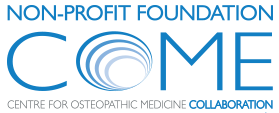The paradox of sham therapy and placebo effect in osteopathy: A systematic review
BACKGROUND: Placebo, defined as “false treatment,” is a common gold-standard method to assess the validity of a therapy both in pharmacological trials and manual medicine research where placebo is also referred to as “sham therapy.” In the medical literature, guidelines have been proposed on how to conduct robust placebo-controlled trials, but mainly in a drug-based scenario. In contrast, there are not precise guidelines on how to conduct a placebo-controlled in manual medicine trials (particularly osteopathy). The aim of the present systematic review was to report how and what type of sham methods, dosage, operator characteristics, and patient types were used in osteopathic clinical trials and, eventually, assess sham clinical effectiveness.
METHODS: A systematic Cochrane-based review was conducted by analyzing the osteopathic trials that used both manual and nonmanual placebo control. Searches were conducted on 8 databases from journal inception to December 2015 using a pragmatic literature search approach. Two independent reviewers conducted the study selection and data extraction for each study. The risk of bias was evaluated according to the Cochrane methods.
RESULTS: A total of 64 studies were eligible for analysis collecting a total of 5024 participants. More than half (43 studies) used a manual placebo; 9 studies used a nonmanual placebo; and 12 studies used both manual and nonmanual placebo. Data showed lack of reporting sham therapy information across studies. Risk of bias analysis demonstrated a high risk of bias for allocation, blinding of personnel and participants, selective, and other bias. To explore the clinical effects of sham therapies used, a quantitative analysis was planned. However, due to the high heterogeneity of sham approaches used no further analyses were performed.
CONCLUSION: High heterogeneity regarding placebo used between studies, lack of reporting information on placebo methods and within-study variability between sham and real treatment procedures suggest prudence in reading and interpreting study findings in manual osteopathic randomized controlled trials (RCTs). Efforts must be made to promote guidelines to design the most reliable placebo for manual RCTs as a means of increasing the internal validity and improve external validity of findings.







